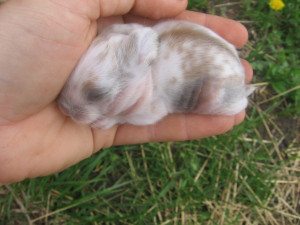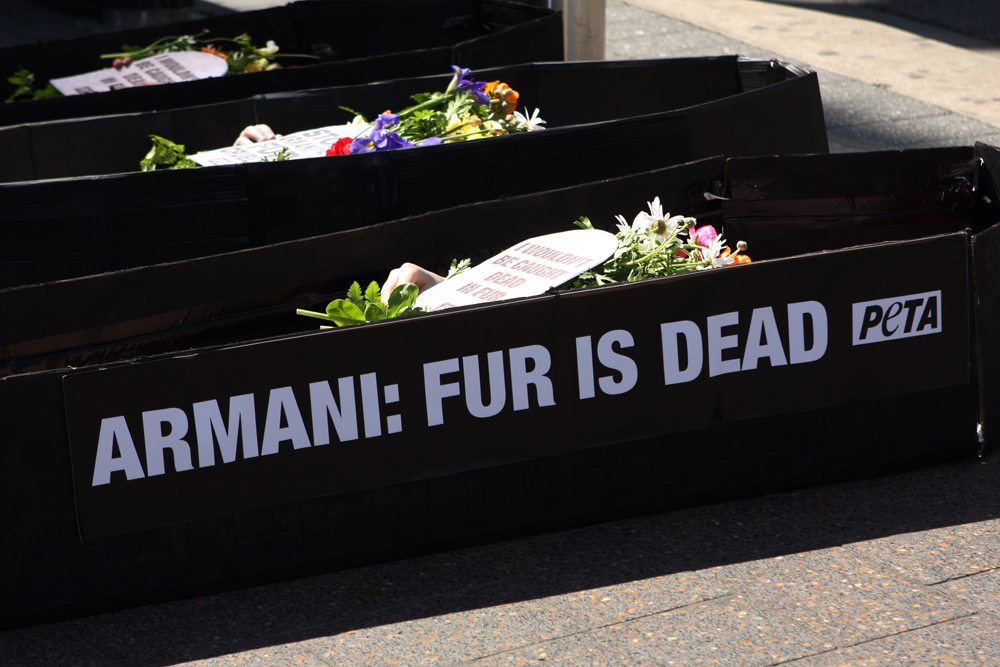PETA expose the rabbit in the headlights
For months, everyone has been investing in snug and cosy Topshop jumpers, thick John Lewis scarves and other comfy accessories to keep warm and stylish for winter. Why not?
One ingredient in the material mixture of such garments, ‘angora’, is something that we should seek to avoid when buying our clothes though. Angora is a breed of rabbit, one that is particularly soft and woolly, making it a desirable animal for Chinese manufacturers to pluck, and for our retailers to use in their winter collections.
The well-known animal rights organisation PETA have recently uncovered the totally abhorrent and inhumane process involved in collecting angora fur in China.
They collated their findings into a truly disturbing video titled EXPOSED: The Agony Behind Angora. I must warn you that watching makes quite a haunting impact; after seeing only twenty seconds I had to turn it off.
Farms of rabbits are trapped into ‘filthy cages, surrounded by their own waste
However, we shouldn’t cower from the reality that some of the clothes we had wrapped up as gifts for Christmas, or even that we are currently wearing, include fur collected in such a ruthless process.
Farms of rabbits are trapped into ‘filthy cages, surrounded by their own waste’. If it wasn’t bad enough that we still continue to treat animals as inanimate beings by forcing lots of them into the smallest box possible to allow for maximum profit, the rabbits are stretched and, as noted, plucked of their fur.
According to PETA, the process that the rabbits are involved in during which their fur is extracted results in ‘extreme shock’ that most can’t handle. Well cared-for angora rabbits usually live for seven to twelve years, yet around 60 percent of those whose fur is used don’t live for more than two. In a way, maybe this is the lesser of two evils seeing as each time the rabbit’s fur grows back it has to undergo the experience once again. This shouldn’t be the case though. The process is a needless one that sees an animal as a commodity sacrificed for our style.
Even if an angora rabbit survives a few rounds of this torture they face certain  death after two to five years at the hands of the manufacturers, adding to the brutality of it all. Western importation of more cheaply-made products from China is problematic with regard to animal torture because Chinese citizens do not stand to face any penalty for such abuse.
death after two to five years at the hands of the manufacturers, adding to the brutality of it all. Western importation of more cheaply-made products from China is problematic with regard to animal torture because Chinese citizens do not stand to face any penalty for such abuse.
Thus, when considering that over 90 percent of the angora fur on our shop shelves originates from China, whenever you buy a piece of clothing with it in, it is most likely that the fur would have been collected in such a harsh way. You may be surprised to know that your favourite shop probably stocks angora products, as many do. Most of the fashion websites that I visited show results for ‘angora’, and some even promote it in their products’ names as a luxury quality.
Laura Ashley, for example, list one of their cardigans as ‘Beige Angora Touch Faux Fur Collar Cardigan.’ The fact that they deliberately state ‘faux-fur’ so as not to be criticised seems ironic when, besides the faux-fur, the fabric was so callously collected.
Many designer brands are guilty of using angora – in my searches I found that Alexander McQueen and Ralph Lauren are among the higher end retailers who stock products using angora fur. Even high street giants Urban Outfitters make use of angora fur in their garments. Unfortunately, it seems that the age-old correlation between demand and supply will stipulate that the shops don’t ditch angora just yet.
Small progress has been made though as many high-street retailers such as River Island, Topshop, Next, New Look, H&M and Acne have stopped production of all angora products.
So, what can Boar readers do to help? Simply boycott sales of angora fur.
These retailers all used to sell the cruelty-ridden garments, but have stopped thanks to PETA’s campaign. The angora ban evoked a celebratory response from the animal rights group who shared how “grateful” they are to “compassionate retailers who have either pulled angora products from their shelves or halted production of clothing and accessories that contain this vile ‘fabric.’”
So, what can Boar readers do to help? Simply boycott sales of angora fur. Wherever you see angora featured in the material list, don’t buy the garment. Additionally, bare in mind that it is not just jumpers that contain this fur but also dresses, socks, scarves, gloves and hats.
Please join PETA’s campaign against the use of angora wool in the fashion industry. As a student community we have a duty to stop this injustice.
[divider]
Header Image Courtesy of Flickr.com/ Eva Rinaldi
Body Image Courtesy of Flickr.com/ henna lion

Comments